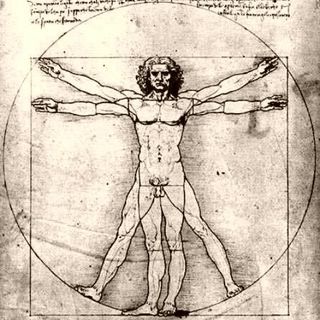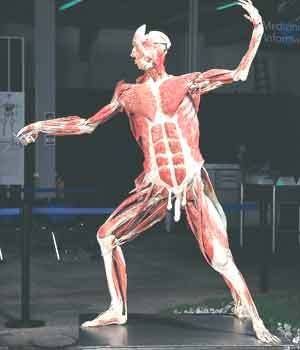Stevenson uses people’s faces to describe a lot more than what they look like. The first place in the story that Stevenson discuses faces is an important one. It comes up during the incident in which Hyde is being detained by the angry mob that saw him trample a little girl. “I never saw a circle of such hateful faces…” (8). Stevenson could have said ‘hateful people’ but he chose to describe their faces as hateful instead, as if their faces represent who they are as people. This idea is echoed later on when Stevenson describes Dr Jekyll’s staff as standing together “with faces of dreadful expectation” (39). Again, Stevenson is describing a group of people by the looks on their faces.
The next time Stevenson mentions faces is in the second chapter. This time, by the use of repetition, he establishes the theme, enabling it to continue throughout the story. Utterson begins to develop an obsession with Hyde—
…and thus it was that there sprang up and grew apace in the lawyer’s mind a singularly strong, almost an inordinate curiosity to behold the features of the real Mr Hyde.” (13)
From this quote it becomes apparent that he doesn’t necessarily aspire to meet Hyde he just wants to see what he looks like. But more than anything Utterson wants to see Hyde’s face.
And at least it would be a face worth seeing: the face of a man who was without bowels of mercy: a face which had but to show itself to raise up… a spirit of endured hatred. (13-14)
Stevenson is doing two things here. First, by the repetition, he is establishing the importance of a person’s face in the novella. Secondly, he shows the power of the face. Hyde’s is a face that can, just by being seen, cause a person to feel an immense hatred. And then, of course, when Utterson does finally encounter Hyde one of the first things he says is “will you let me see your face?” (15)
Stevenson makes it a point to include a description of faces whenever describing a character, especially if that person is experiencing any sort of intense emotion. For example, when the maid witnesses the murder on the street below her, she describes the murdered mans face to the police.
…the moon shone on his face as he spoke, and the girl was pleased to watch it, it seemed to breathe such an innocent and old-worn kindness of disposition, yet with something high too, as of a well-founded self-content. (21)
The maid’s assumptions in regards to the man’s personality were brought to her mind, supposedly, from just catching a glimpse of the man’s face. And from that one moonlight glimpse of his face she gathered so much about his character.
Another maid in the text, the one of Mr Hyde’s, is described as “an ivory-faced and silvery-haired old woman” (23) and that “she had an evil face, smoothed by hypocrisy…” (23). This description of the “evil face” makes sense when, pages later, Jekyll describes the woman as a “creature whom [he] well knew to be silent and unscrupulous” (59). This adjective, “unscrupulous,” or lacking in honesty and being oblivious to what is honorable, echoes Hyde’s character. If she mirrors Hyde’s characteristics, in Stevenson’s world, so too would her “evil” face.
This brings me to the interesting juxtaposition of the sight (and description) of Dr Jekyll’s face and that of Mr Hyde’s. Stevenson introduces the reader to Mr Hyde before we get a description of Dr Jekyll. The first time Stevenson uses a facial reference is through Utterson’s thoughts after his encounter with Hyde— “The last, I think; for O my poor old Harry Jekyll, if ever I read Satan’s signature upon a face, it is on that of your new friend” (16). This, of course, is the exact opposite description of Jekyll’s face, given a couple pages letter when we first meet him: “a large, well-made, smooth-faced man of fifty, with something of a slyish cast perhaps, but every mark of capacity and kindness…” (19). Stevenson’s choice to use the description “smooth-faced” is an interesting one. The word smooth is comforting, conjuring up feelings of pleasantness, it is the exact opposite feeling one gets when looking at Hyde. And, in fact, Hyde is often described as hairy and ape-like, unlike Jekyll who, Stevenson makes it a point to show, is completely without hair on his face. The use of the word “mark” in his description of Jekyll could parallel the word “signature” used in the description of Hyde, showing how both are “marked” by opposing ideas; Hyde, by evil, and Jekyll, by kindness. Moments later we see Dr Jekyll’s “large handsome face” change at the mention of his counterpart, Hyde. Jekyll’s face goes from being “handsome” to “[growing] pale to the very lips, and there came a blackness about his eyes” (20). This shows how Stevenson uses the strange change in Jekyll’s face to give an allusion to his famous plot twist. Remember the mention of the eyes being the windows to the soul? It is probably no coincidence that Utterson mentions Jekyll’s eyes turning black when thinking about Hyde.
If one reads closely it become obvious that every time Hyde is mentioned to Jekyll, Stevenson makes reference to his face. For example, when Jekyll talks about Hyde in a conversation with Utterson, he (Jekyll) “covered his face for a moment with his hands” (28). Jekyll may be almost unconsciously masking his face to draw illusions to the way that his face becomes “masked” by Hyde’s when he makes his change. This theme of masking is brought up again later in the novella with the character of Poole. Poole explains to Utterson his concern with the odd behavior of his employer, Jekyll. “‘Sir, if that was my master, why had he a mask upon his face?’… [Poole] paused and passed his hand over his face” (41). This time it is Poole who may be unconsciously masking his face, mirroring his own masters disturbing change.
It is no doubt that faces are a crucial theme in the novel. Now we can ask the question, why did Stevenson include this? What can this signify? As I mentioned before, I believe that Stevenson placed such an importance on the face because it is the window to the soul. The soul is a very important theme of the novella. The duality of the soul, the possession of a soul, etc., are important issues brought up by Stevenson. In Carl Jung’s book Man and His Symbols he directly addresses Jekyll and Hyde when discussing “Disassociation,” or “the splitting in the psyche, causing a neurosis” (Jung, 7). Jung mentions the novella saying, “a famous fictional example of this state is Dr Jekyll and Mr Hyde… In the story Jekyll’s ‘split’ took the form of a physical change, rather than (as in reality) an inner, psychic state” (Jung, 7). I mention this because the word “psyche” can also be taken to mean “soul.” In analyzing the neurosis of Disassociation he hits on what could be referencing in his novella, knowingly or not.
Among such people, whose consciousness is at a different level of development from ours, the “soul” (or psyche) is not felt to be a unit. Many primitives assume that a man has a “bush soul” as well as his own, and that this bush soul is incarnate in a wild animal…, with which the human individual has some kind of psychic identity. (Jung, 6-7).
This “bush soul” could be embodied in Hyde. It would explain why Hyde’s face would be hairy, so as to mimic the features of an ape.
Jung goes on to explain further—
In some tribes it is assumed that a man has a number of souls; this belief expresses the feeling of some primitive individuals that they each consist of several linked but distinct units. This means that the individual’s psyche is far from being safely synthesized; on the contrary, it threatens to fragment only too easily under the onslaught of unchecked emotions. (Jung, 7-8)
This separation of souls could explain why it is that Hyde’s face is so hard to describe. I don’t want to go so far as to say that Hyde doesn’t have a soul but I would suggest that perhaps he has a different kind of soul, one more like the “bush soul” that Jung describes. He can not be described because other human beings can not recognize themselves enough in him to be able to clearly see him. This is rather unlike Jekyll who contains a human soul whose face looks “handsome” and can be clearly seen by the narrator and the reader.
When taking into account the writings of Jung it seems that Stevenson, by placing such importance on the face as representing emotion, feeling, and humanity, was trying to show the state of a person’s soul. It is no wonder then why people who are generally upset by unthinkable acts are described as “angry faces.” Or people who have been shaken to the core by fear are “faces of dreadful expectation.” It also brings great importance to the different descriptions of Jekyll and Hyde’s faces. Jekyll, who contains a soul with a consciousness, has a kind and smooth face, whereas Hyde has one that is satanic or ape-like. By placing emphasis on faces, Stevenson is actually using a unique way to address the importance of the duality of the soul by locating the presence of the soul in the face. Stevenson is literally showing us that the eyes are the windows to the soul and, therefore, they are the windows to our very humanity or, in some cases, the lack there of!
copyright Megan Tharpe 2004

 fig. 1
fig. 1 fig. 2
fig. 2